WILD FOOD RECIPES
For me, one of the greatest pleasures of eating wild food is that you never quite know what you are going to come home with and which new flavour combinations may present themselves. As a result, using wild ingredients requires a fair amount of pragmatism and the courage to try something new. Through my #DailyWilds project I have discovered (sometimes through bitter mistakes) some pleasing new combinations of ingredients and have rarely eaten the same recipe twice. But just because they work for me, doesn’t mean to say it will work for others. I believe that not only taste, but the actual way we detect flavour can vary greatly between individuals. So, while I have provided here some recipes and descriptions that work well for me, I urge you to tread the untrodden path and find what suits you.
And to wholly contradict that last paragraph, I should also say that some combinations are tried and tested winners – gooseberries and elderflower, chanterelles and eggs, cep and parmesan – spring to mind! Quite a few are country classics (sloe gin, elderflower champagne etc) I have adapted from classics like Food For Free by Richard Mabey or Wild Food by Roger Phillips, running forward with a few new twists.
My general advice to any aspiring wild food cook is to keep things simple until you really get to know a new ingredient. Unfussy steaming, sautéing, pickling or just eating raw with a sympathetic dressing is often the best way to get intimate with the pure flavours and striking textures of wild plants and fungi before finding ways to combine them with other flavours.
Many of the dishes described below don’t have an accompanying recipe. This is often because I can’t actually remember what I did, and partly because I would rather suggest ideas than prescribe recipes. The exception is my wild mushroom risotto, which is perfect! ;).
Where there is a recipe, please treat weights and measures as indications of proportions rather than strict forlmulae – cooking is an art, not a science. I would be delighted to hear of any improvements or new ideas in the comments box below.
I post most of my writing on drinks uses of wild plants on The Botanist website – see here.
How to make mead easily with wild plants
Foraged dashi broth, with reedmace and spoot clams
Foraged cocktail – Wild Whisky Sour With sea buckthorn and birch syrup
“Sweet Cicely’s Ruin” foraged cocktail
“Islay Spring” foraged cocktail – including how to make wild amaro and ground ivy shrub
How to lacto-ferment wild greens
Dock, dandelion and nettle spring puddings
Super Simple Wild Fruit Leathers
Herring pickled 3 ways with pink purslane, beetroot, pumpernickel, smoked egg, creamed roe, preserved chanterelles, hedgehog fungi & jelly ear, sweet elderberry vinegar and gorse flowers.
Elderberry vinegar (and other fruit vinegars)
Ultimate wild mushroom risotto – with ceps, puffballs and chanterelles
Horse mushrooms stuffed with sweet cicely
served on seared puffball steaks with summer foliage (ground elder, wood sorrel, hogweed buds, self heal, bush vetch)
Wild watercress and parmesan tart
Amanitas, decievers, girolle with meu and self heal.
Braised pheasant with winter chanterelles and root vegetables.
Seared scallops with spring foliage: wilted ramsons, nettle tops, reedmace, sweet cicely puree, wood sorrel, saxifrage
Char-grilled pheasant in pitta bread with sea radish and yogurt
Spoots stir-fried with sea radish pods, wild garlic and sorrel
Steamed marsh samphire with poached egg and langoustine
 Chanterelle and spring onion tart
Chanterelle and spring onion tart
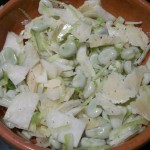 Wild fennel, broad bean and colrabi salad
Wild fennel, broad bean and colrabi salad
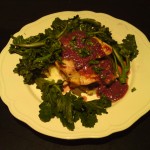 Roast guinea fowl with japanese knotweed sauce and steamed sea kale
Roast guinea fowl with japanese knotweed sauce and steamed sea kale
 Seared venison liver, battered parasol mushrooms, beetroot and sweet ciceley compote
Seared venison liver, battered parasol mushrooms, beetroot and sweet ciceley compote
 Giant puffball steaks, roasted with bacon, tomato and cheese
Giant puffball steaks, roasted with bacon, tomato and cheese
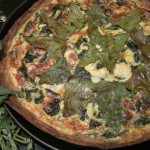 Smoked haddock and orache tart
Smoked haddock and orache tart
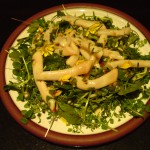 Spoots marinated with wood sorrel, ramsons and sweet ciceley
Spoots marinated with wood sorrel, ramsons and sweet ciceley
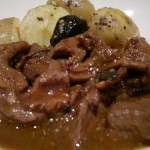 Roe deer fillet with chanterelles and pickled walnuts
Roe deer fillet with chanterelles and pickled walnuts
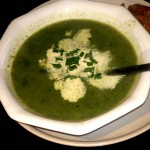 Wild watercress, nettle and ramson soup
Wild watercress, nettle and ramson soup
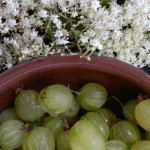 Elderflower and gooseberry fool
Elderflower and gooseberry fool
Spring stir-fry
Japanese knotweed, elderflower and sweet ciceley puree – for fool, sorbet or with yogurt
Japanese knotweed savoury sauce for game
Sea bass stuffed with sweet ciceley and sorrel
Stargazy Pie – langoustine, rabbit, and chicken of the woods
Meadowsweet ice cream
Sloe and meadowsweet gin
Watercress and nettle soup
Samphire, reedmace and pignut stirfry
Mussels with ground elder and ramson
Salt marsh lamb with samphire salt, anchovies, rosemary, garlic and steamed marsh samphire
Sweet pickled marsh samphire


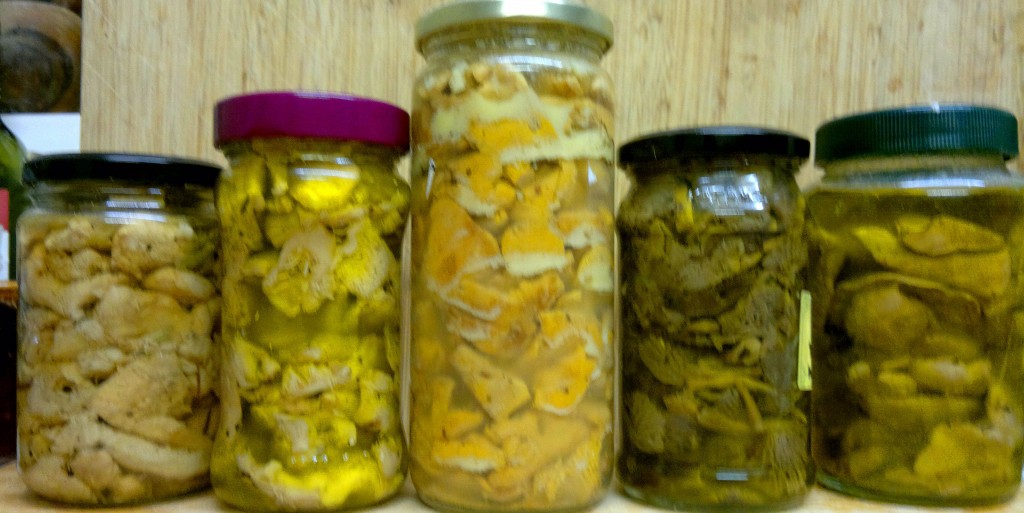
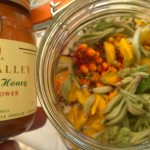
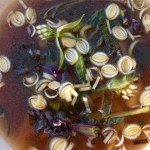
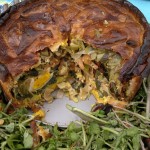
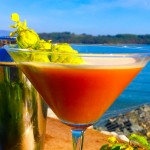
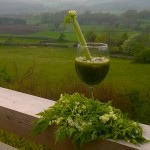
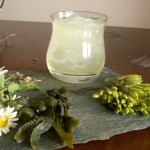
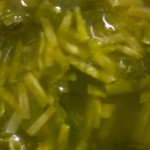
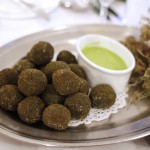
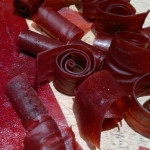
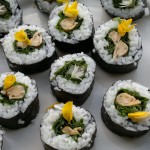
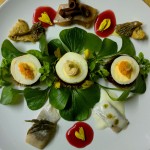
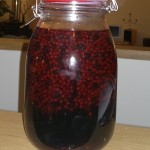
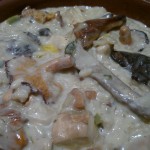
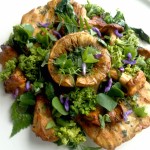


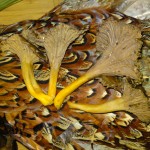
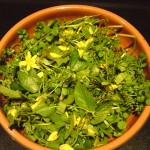
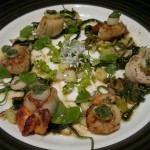

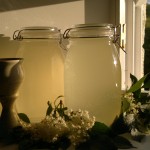
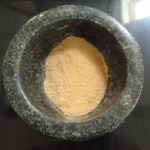
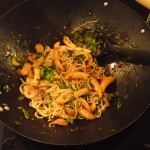
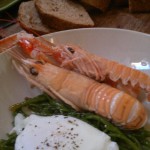
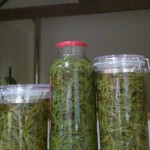
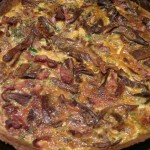
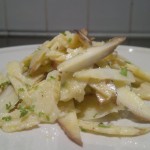
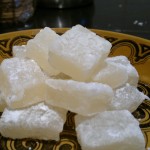
8 Comments
Hi mark I make sloe gin every year but have never put meadowsweet in
Could you please tell me how much meadowsweet you put in
Thank you
Chris
Hi Chris. Its quite subtle, so make sure you get the flowers at their aromatic prime (ususally a sunny july morning) and put lots in – I try to add at least a quarter by volume. Sometimes its almost imperceptable, others it gives a lovely sweet bouqet. You can also cheat and add few drops of almond extract!
thanks i already add almond extract to my sloe gin cant wait to give medowsweet a try. great web site for formative
thank again
chris
I am glad that I came across such a good website for different kinds of recipes. And pictures too are looking amazing. Got a website worth a follow! I would love to try that horse mushrooms. It’s really mouth-watering.
Hello Mark,
Once again thank you for including my daughter and I in the mushroom foraging course this past October in the Lake District. Beth would really like to have the recipe for the cake that you had. We have looked on your website and cannot find it.
Thank you in advance,
Wendy (from Canada)
Hi Wendy – check out my post on common hogweed on this site. 🙂
Hi
I was wondering if you can cook pignuts? I heard they taste a little like chestnuts and wanted to use them as chestnut substitute in mushroom and chestnut stuffing.
Thanks
Yes, that sounds good. Though I think their crunchy texture wouldn’t be as soft as chestnuts. They maybe lend themselves a bit more towards stir fry.